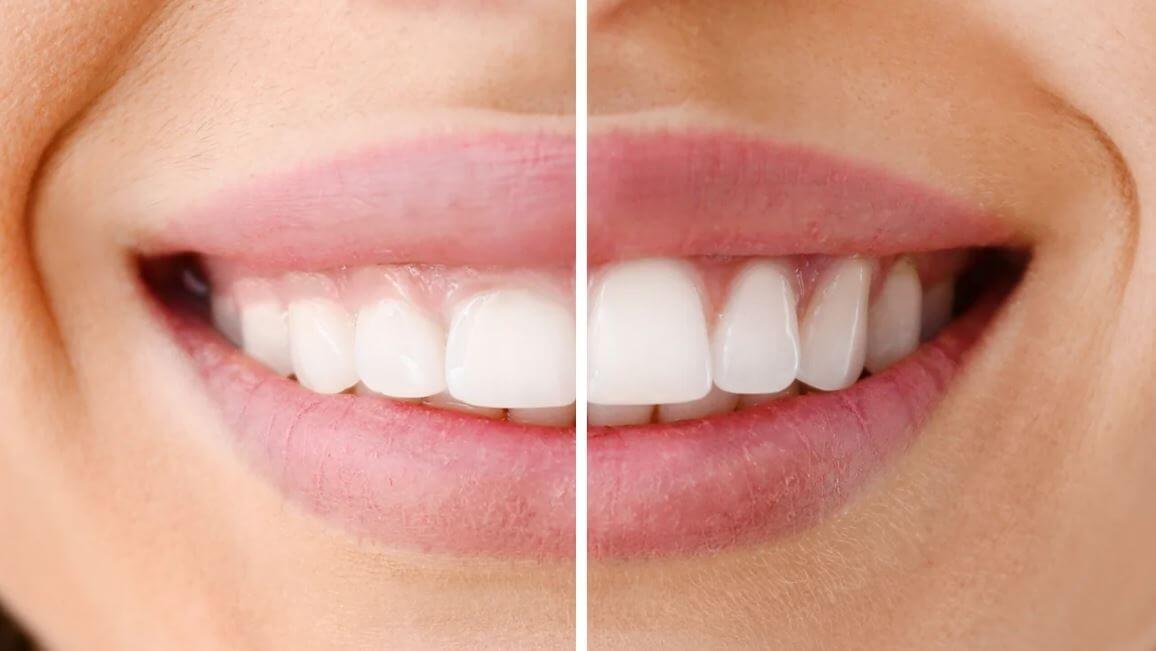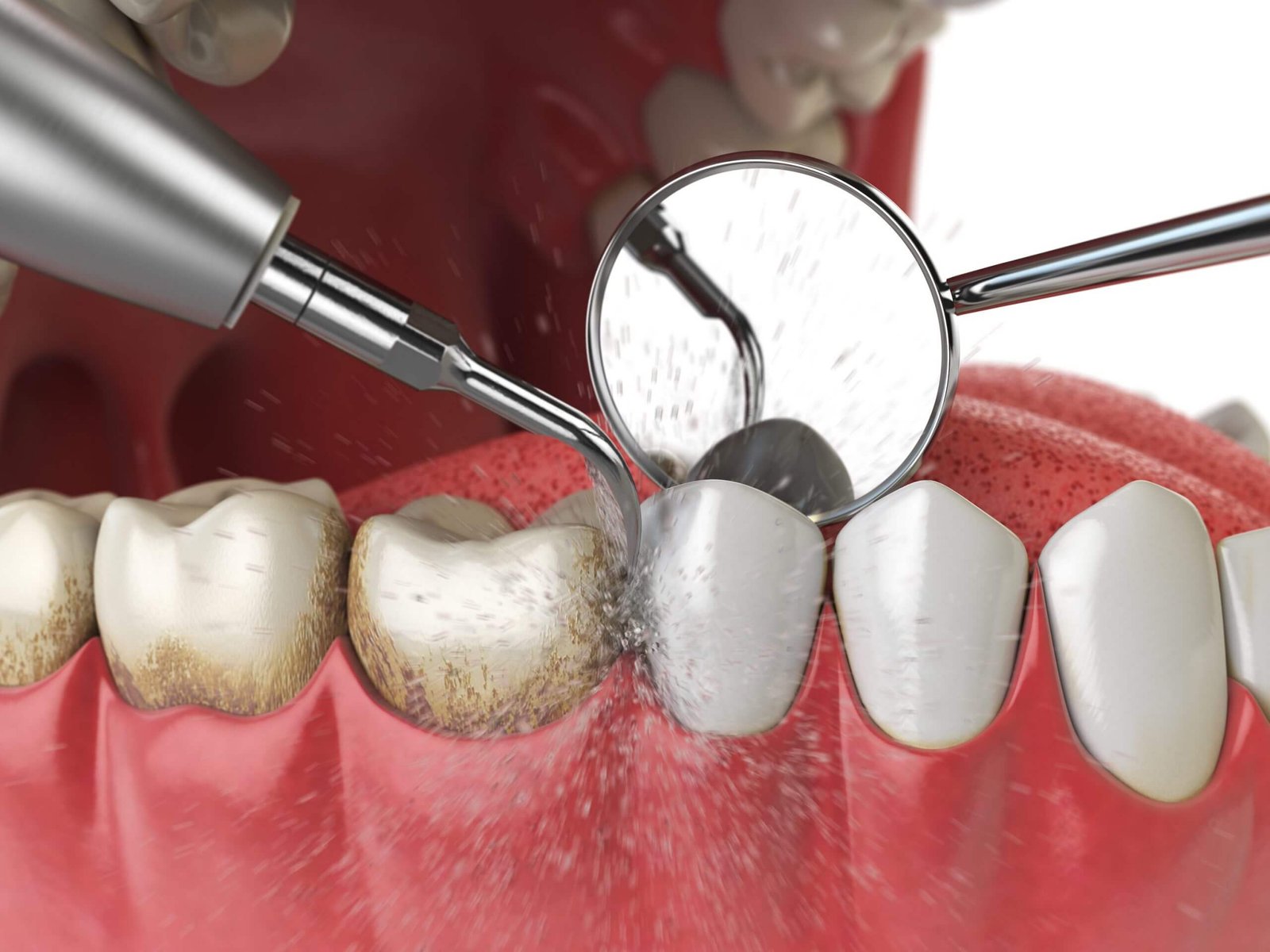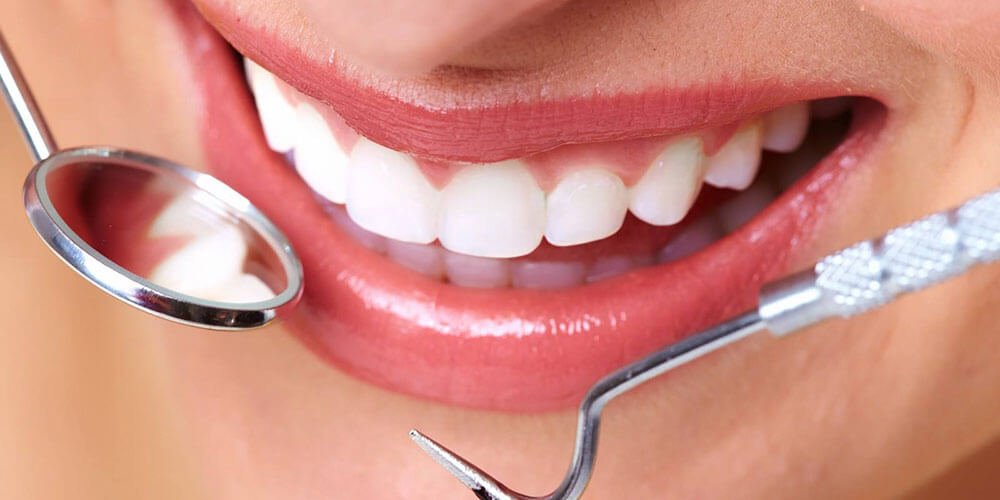Gum disease affects a significant portion of the population and can lead to serious oral health problems if left untreated. Traditional gum surgery has been the go-to treatment for advanced cases, but it is often invasive, painful, and requires an extended healing period. Laser therapy offers a modern approach that provides several advantages over traditional gum surgery. There are remarkable benefits of Laser Therapy for healing gums, offering precise and efficient treatment for gum-related issues.
Laser therapy is a minimally invasive procedure that uses focused light energy to treat various dental conditions, including gum disease. The laser targets and removes infected tissue while preserving healthy tissue, resulting in reduced bleeding and swelling during the procedure. Additionally, laser therapy promotes faster healing times than traditional surgery because it stimulates cell regeneration in the affected area. This article will provide a comprehensive overview of laser therapy for healing gums, detailing its benefits over traditional surgery and what patients can expect during the procedure and recovery period.
Periodontal Procedures encompass a range of treatments aimed at restoring gum health. Laser therapy, a minimally invasive technique, is gaining popularity for its precision in targeting and treating gum-related issues effectively.
Understanding Gum Disease
Periodontal disease, a chronic inflammatory condition of the gingiva and surrounding tissues caused by bacterial biofilm, affects more than half of adults in the United States and is a significant contributor to tooth loss. The prevention of gum disease lies in maintaining good oral hygiene habits such as brushing twice daily, flossing, regular dental check-ups, and avoiding smoking and excessive alcohol consumption. However, neglecting these practices can lead to the development of gum disease.
The symptoms of gum disease include redness, swelling, bleeding gums during brushing or flossing, persistent bad breath or taste in the mouth, loose teeth or changes in bite alignment. When left untreated for an extended period of time, it can progress into advanced stages that require surgical intervention. Traditional treatments for severe cases of periodontitis involve scaling and root planing procedures followed by open flap surgery to remove infected tissue.
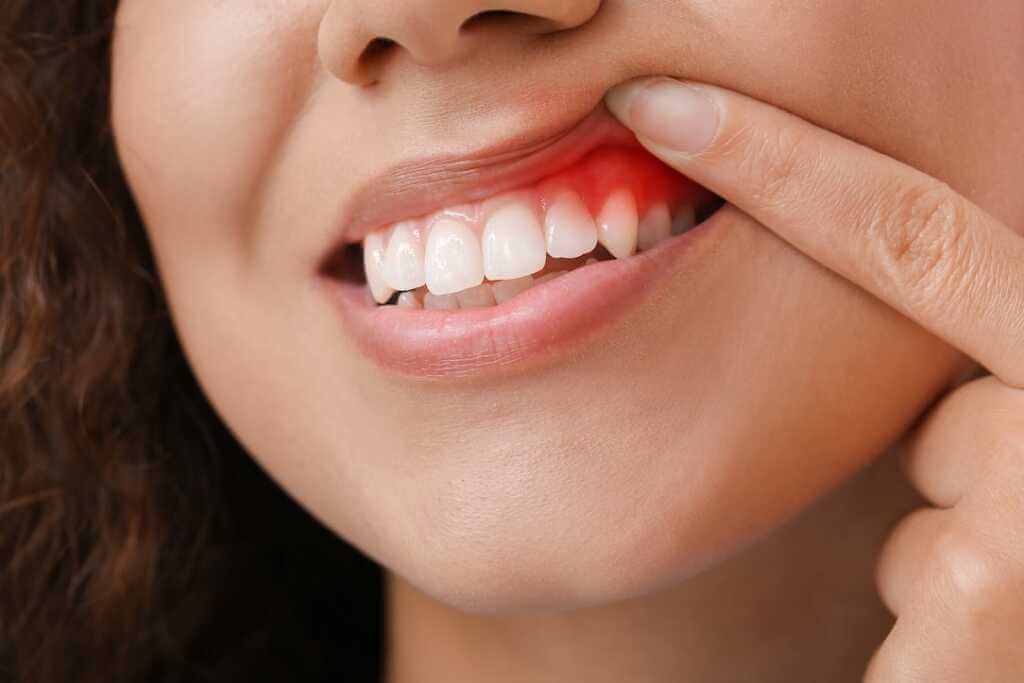
Laser therapy for gum line healing has emerged as a modern approach to treating gum disease. Unlike traditional methods that rely on cutting away infected tissue with scalpels or using drills to remove tartar buildup on roots surfaces under anesthesia, laser therapy uses focused beams of light energy that target specific areas with precision. This method eliminates bleeding since there is no cutting involved; it also reduces swelling and discomfort post-surgery while promoting faster healing times.
Traditional Gum Surgery
Surgical intervention has long been the traditional method for treating various periodontal conditions, including gum recession and periodontitis. This typically involves cutting and suturing of the gums to remove diseased tissue or to graft new tissue onto the affected area. While this method is effective, it can be quite invasive and painful for patients. Additionally, recovery time can be lengthy, with patients often requiring pain medication and several follow-up visits.
To further understand the traditional surgical approach, here are some points to consider:
- Traditional surgery requires a significant amount of time in the dental chair.
- Recovery can take weeks or even months.
- It carries a greater risk of infection than laser therapy.
- Patients may experience discomfort from swelling, bleeding, or pain post-surgery.
- Cost comparison between traditional surgery and laser therapy typically favors laser therapy.
Despite these drawbacks, many dentists continue to use traditional surgical methods due to their effectiveness in treating severe cases of gum disease. However, with advancements in technology comes an alternative option: laser therapy.
https://gumlinehealer.com/surgical-gum-line-treatments/
Introduction to Laser Therapy
Recent technological advancements in periodontal treatment have provided a more efficient and less invasive alternative to traditional gum surgery. Laser therapy is a cutting-edge approach used by dental professionals to treat various gum diseases, including gingivitis and periodontitis. This non-surgical procedure uses different types of lasers that are safe and effective for treating soft tissues.
One of the benefits of laser therapy is its ability to target only the affected area, leaving healthy tissue unharmed. The two primary types of lasers used in dental procedures are diode and erbium lasers. Diode lasers are commonly used for soft tissue treatments, while erbium lasers can be used on both hard and soft tissues. These instruments have varying wavelengths that allow them to interact with specific tissues differently.
Laser therapy is becoming increasingly popular due to its many advantages over traditional gum surgery. Not only does it reduce bleeding during the procedure, but also promotes faster healing times with minimal discomfort or pain post-operatively. In addition, patients typically require fewer follow-up appointments compared to those who undergo traditional gum surgery. With all these benefits, it’s no wonder why so many dental professionals are choosing laser therapy as their preferred method for treating gum disease over conventional approaches such as scaling and root planing or surgical intervention.
It’s clear that this innovative approach has revolutionized periodontal treatment methods. By utilizing advanced technology in dentistry, laser therapy has proven itself as an efficient alternative that provides numerous benefits for both practitioners and patients alike.

Advantages of Laser Therapy over Traditional Gum Surgery
Laser therapy has become an increasingly popular option for treating periodontal disease due to its numerous advantages over traditional gum surgery. One of the key benefits of laser therapy is that it is less invasive than traditional surgery, reducing discomfort during and after the procedure. Additionally, laser therapy offers a faster recovery time and higher success rate, making it a compelling alternative for patients seeking effective treatment options. Overall, these advantages make laser therapy a promising approach for those seeking gum line healing with minimal disruption to their daily lives.
Less Invasive
The adoption of less invasive techniques in the field of dentistry has shown promising outcomes in the management of periodontal disease. Laser therapy, as a modern approach to treating gum line issues, offers numerous benefits and risks to patients. Compared to traditional gum surgery, laser therapy is less invasive and requires minimal downtime for recovery.
One significant advantage of laser therapy is that it provides exceptional patient comfort during the procedure. The use of lasers eliminates the need for incisions or sutures, which can cause discomfort and pain. Additionally, since lasers are highly precise tools, they can target only the affected tissue while leaving healthy tissue intact. This means that patients experience less bleeding and swelling after treatment, leading to an overall more comfortable experience. Overall, laser therapy’s reduced invasiveness makes it an attractive option for those who want to avoid painful procedures while still receiving effective treatment for their periodontal disease.
With a faster recovery time than traditional gum surgery and improved patient comfort during treatment, laser therapy stands out as a modern approach to healing gum lines. By eliminating much of the trauma associated with traditional methods and reducing downtime post-procedure, this technique offers patients an efficient way to manage periodontal disease without disrupting their daily routines or causing undue discomfort.
Faster Recovery Time
The adoption of less invasive techniques, such as laser therapy for gum line healing, has demonstrated a faster recovery time when compared to traditional methods. Patients who undergo this modern approach experience reduced pain and minimal scarring, which contributes to their overall satisfaction with the treatment. Additionally, the use of lasers in gum line healing allows for more precise targeting of affected areas and results in less damage to surrounding healthy tissue.
To paint a picture for the audience, here are four benefits of faster recovery time through laser therapy:
- Reduced need for pain management medication
- Ability to return to work or daily activities sooner
- Fewer follow-up appointments needed
- Improved quality of life during recovery period
With these advantages in mind, it is clear that laser therapy offers patients a superior option when it comes to gum line healing. Furthermore, not only does this method offer faster recovery times and less discomfort but it also boasts a higher success rate than traditional techniques.
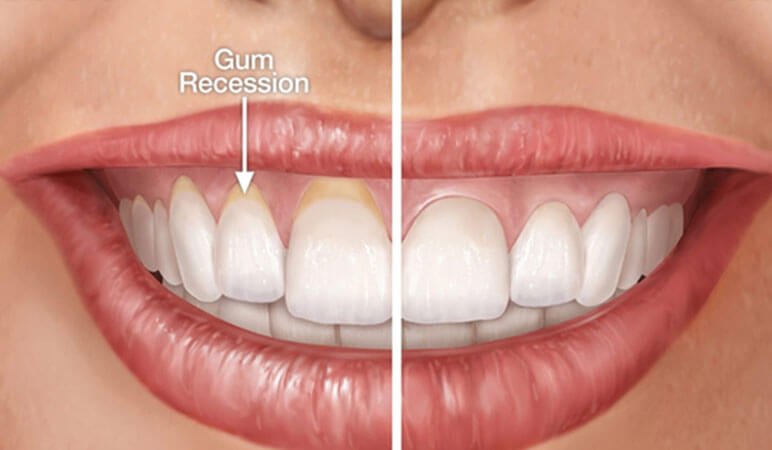
Higher Success Rate
The use of improved techniques and alternative therapies for periodontal treatment has shown a higher success rate than traditional methods. These modern approaches, including laser therapy, have revolutionized the way gum line healing is approached in clinical practice. With less invasive procedures and fewer side effects, patients experience faster recovery times and improved outcomes.
Laser therapy offers a range of benefits compared to traditional gum surgery. The technique is minimally invasive, which means that there is less discomfort and bleeding during the procedure. Laser therapy also eliminates the need for sutures or stitches post-treatment. Additionally, studies have shown that laser therapy results in reduced inflammation and accelerated tissue regeneration compared to traditional gum surgery. With these advantages in mind, candidates for laser therapy should consider this modern approach as an alternative option to achieve optimal results.
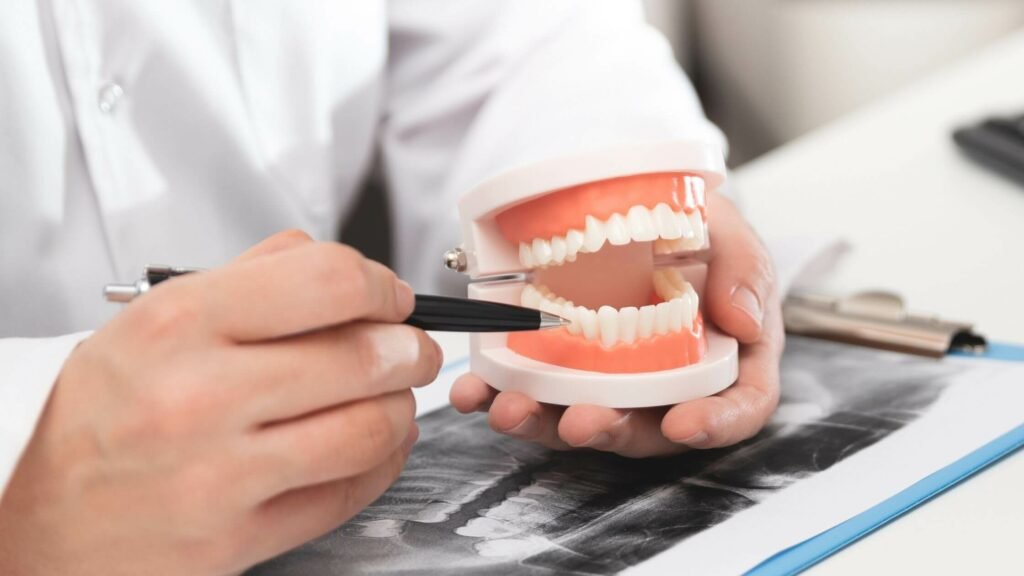
Candidates for Laser Therapy
The decision to undergo laser therapy for gum disease is not always straightforward and depends on various factors. The severity of the condition plays a crucial role in determining if a patient is a suitable candidate for this modern approach. Other considerations, such as medical history, medication use, and lifestyle habits, also need to be evaluated to ensure that laser therapy is safe and effective. A thorough assessment by a dental professional can help determine if laser therapy is appropriate for an individual’s unique circumstances.
Severity of Gum Disease
The severity of gum disease can range from mild inflammation to advanced periodontitis, which can lead to tooth loss and other systemic health issues if left untreated. It is important to identify the severity of gum disease before deciding on the appropriate treatment plan, including whether laser therapy is a viable option. Below are four factors that dentists consider when assessing the severity of gum disease:
- Bleeding: If gums bleed easily during brushing or flossing, it may indicate gingivitis, an early stage of gum disease.
- Swelling: Swollen gums are another sign of inflammation caused by bacterial buildup.
- Pocket Depth: Gum pockets form when bacteria cause the gums to pull away from teeth. The deeper these pockets become, the more severe the gum disease.
- Tooth Movement: In advanced stages of gum disease, teeth may loosen or shift due to damage to supporting tissue.
Prevention and maintenance play an essential role in managing all stages of gum disease but particularly in its early stages where laser therapy could be most effective in stopping progression towards more severe forms such as periodontitis and bone loss. Regular dental check-ups with a dentist or periodontist can help detect any signs or symptoms early on for timely intervention with non-surgical options like scaling and root planning, antibiotics and medicated mouthwashes among others; however, some people may require further intervention like laser therapy for deep cleaning below the surface level areas not reachable through traditional means like scaling alone.

Other Considerations
Factors beyond the severity of gum disease, such as patient preference and the invasiveness of traditional treatment methods, should also be considered when determining the appropriate course of action for managing periodontal health. One important consideration is cost. Traditional treatments such as scaling and root planing can be expensive, especially if multiple sessions are required. In contrast, laser therapy may be a more cost-effective option in the long run because it often requires fewer follow-up appointments and has a shorter recovery time.
Another consideration is insurance coverage. While some dental insurance plans may cover laser therapy for periodontal treatment, others may not. Patients should check with their insurance provider to determine what procedures are covered under their plan. Additionally, patients should consider any out-of-pocket expenses they may incur if their insurance does not cover laser therapy. Despite these potential challenges, many patients still choose laser therapy as a preferred treatment option due to its minimally invasive nature and faster healing times compared to traditional treatments.
Laser Therapy Procedure Details
This section delves into the specifics of the procedure involved in addressing gum line issues through a technologically advanced treatment. Laser therapy for gum line healing is a minimally invasive and pain-free procedure that involves the use of a specialized laser to remove diseased or damaged tissue from around the teeth. The benefits of using laser therapy over traditional methods include reduced bleeding, swelling, and discomfort during and after the procedure.
Before undergoing laser treatment, patients must prepare by informing their dentist about any medications they are taking or medical conditions they have. They may also be advised to avoid eating or drinking anything for a certain period before the appointment. During the actual procedure, a local anesthetic is applied to numb the affected area, preventing any potential discomfort during treatment.
Once the laser has been used to remove any damaged tissue and promote blood clotting in the gums, patients can return home immediately following their appointment. Post-treatment care may include avoiding spicy foods or smoking for several days while waiting for tissues to heal. While recovery time varies depending on individual circumstances, most people experience minimal discomfort and can resume normal activities within a day or two after treatment. Moving forward, proper oral hygiene practices such as brushing twice daily and flossing regularly will help maintain healthy gums following this innovative approach to treating gum line issues.
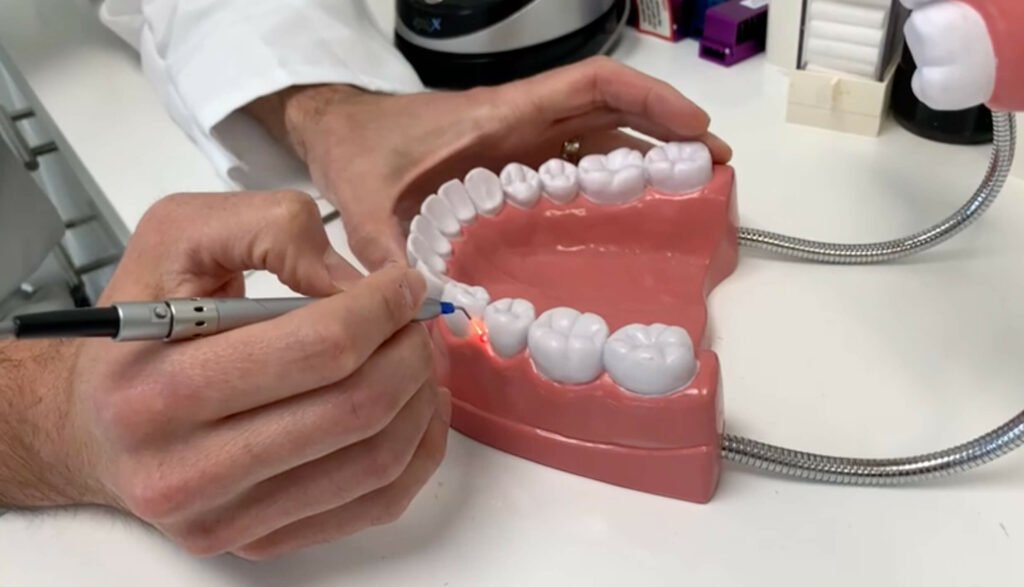
Aftercare and Recovery
Following the minimally invasive and pain-free procedure of laser therapy for gum line healing, patients can expect a brief recovery period that involves following specific post-treatment instructions to ensure the best possible outcome. These instructions typically include avoiding certain foods and practices while the gums heal, such as smoking, using straws, or consuming hot or spicy foods. Patients may also be advised to rinse their mouth with saltwater periodically and use prescribed medication if necessary.
It is important to follow these post-treatment instructions carefully to minimize any potential complications that could arise from poor aftercare. Some common complications associated with laser therapy for gum line healing include sensitivity, swelling, and bleeding. However, these symptoms should subside within a few days after the procedure. If patients experience persistent discomfort or notice unusual changes in their oral health during the recovery process, they should contact their dentist immediately.
Proper aftercare and attention are crucial for successful outcomes following laser therapy for gum line healing. By adhering to post-treatment instructions and monitoring any developments closely, patients can expect minimal discomfort during the recovery period before resuming normal activities in no time.
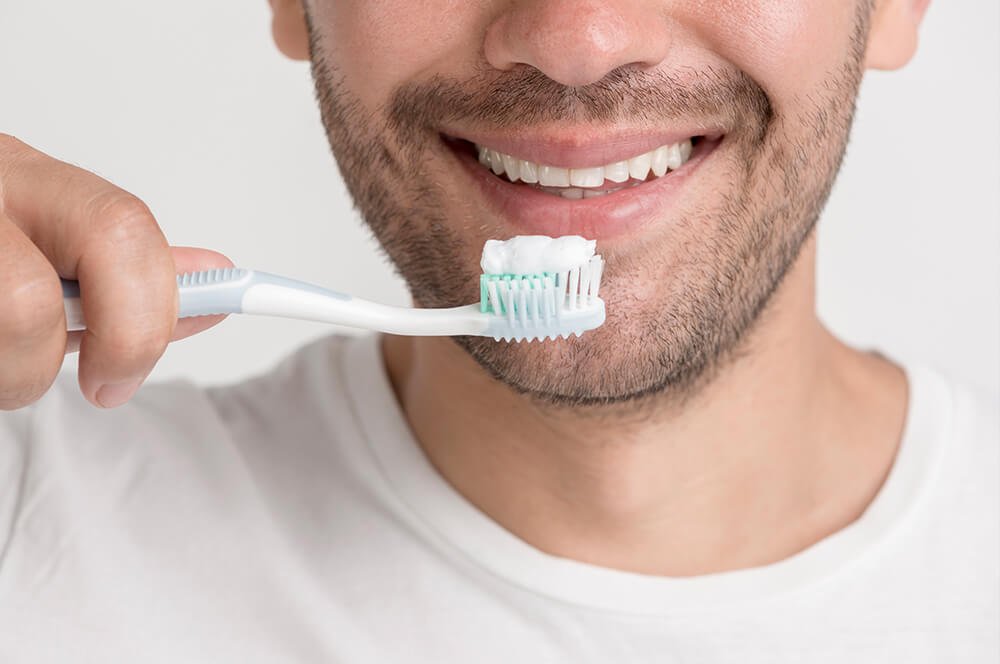
Future of Laser Therapy for Gum Line Healing
Aftercare and Recovery are critical aspects of any medical procedure, including Laser Therapy for Gum Line Healing. Proper post-treatment procedures can significantly enhance the long-term effectiveness of laser therapy advancements in treating gum line diseases. Patients should follow their dentist’s instructions precisely to avoid complications such as bleeding, infection, or discomfort.
Looking ahead, the future of Laser Therapy for Gum Line Healing appears bright due to its many benefits over traditional treatments. The precision of lasers is unmatched by any other treatment method, reducing the risk of damage to healthy tissues and bones while efficiently targeting diseased areas. Additionally, laser therapy allows patients to heal faster and with less pain than traditional methods.
Laser Therapy for Gum Line Healing has shown significant benefits in treating a wide range of gum line diseases effectively. As technology continues to advance, it is likely that we will see further improvements in laser therapy’s long-term effectiveness and precision. With proper aftercare and recovery procedures in place, patients can enjoy restored oral health without compromising quality-of-life factors like pain or discomfort during treatment.
Further Entities
- https://en.wikipedia.org/wiki/Bad_breath
- https://www.nidcr.nih.gov/health-info/oral-hygiene
- https://dentistry.uic.edu/patients/dental-services/specialty-services/oral-maxillofacial-surgery/
Frequently Asked Questions
How long does the healing process take after laser therapy for gum line healing?
The duration of the healing process after laser therapy for gum line healing can vary depending on several factors, such as the extent of the procedure and how well post-operative care is followed. Generally, it takes between one to two weeks for initial healing to occur, during which time patients should avoid eating hard or crunchy foods and maintain good oral hygiene practices. After this period, a follow-up appointment with the dentist may be necessary to ensure proper healing and any necessary adjustments. It is important that patients adhere to their post-operative care instructions in order to minimize discomfort and promote optimal healing.
Is laser therapy for gum line healing covered by insurance?
Insurance coverage for laser therapy for gum line healing varies depending on the policy and provider. Affordability may also be a concern, as some insurance plans may not cover the full cost of the procedure. It is important to check with your insurance provider to see if they offer coverage for this type of treatment and what percentage of the cost they will cover. Additionally, it is important to consider any out-of-pocket expenses that may arise from deductibles or co-payments. While laser therapy for gum line healing may have numerous benefits, including faster healing times and reduced discomfort compared to traditional methods, it is essential to weigh the potential costs against these benefits before making a decision.
Can laser therapy be used for all stages of gum disease?
Laser therapy has been shown to be an effective treatment for gum disease. However, it is important to note that laser therapy may not be suitable for all stages of gum disease. In some cases, alternative treatments such as scaling and root planing may be more appropriate. It is also important to consider individual patient factors when determining the most effective treatment approach. While laser therapy offers a promising option for treating gum disease, it should always be used in conjunction with other therapies and under the guidance of a trained professional. Ultimately, the effectiveness of laser therapy will depend on a variety of factors including the severity of the condition and individual patient characteristics.
Is laser therapy for gum line healing painful?
The answer is no, it is not. This non-invasive procedure uses a focused beam of light to target and eliminate bacteria and diseased tissue without causing any discomfort or pain to the patient. In fact, many patients report feeling minimal discomfort during and after the treatment. Overall, laser therapy for gum line healing provides an effective and pain-free alternative to traditional treatments, making it a valuable option for those seeking optimal oral health.
Are there any risks or side effects associated with laser therapy for gum line healing?
Potential complications and risks associated with laser therapy for gum line healing include heat damage to the surrounding tissues, nerve damage, and infection. However, these complications are rare when the procedure is performed by a skilled and experienced dentist or periodontist. In comparison to traditional gum surgery, laser therapy has been shown to be more effective in reducing bleeding, swelling, and discomfort during and after the procedure. Additionally, laser therapy promotes faster healing times and can often be completed in fewer visits than traditional surgery. Despite the potential risks, laser therapy for gum line healing offers numerous benefits that make it a viable option for those seeking treatment for gum disease.
Conclusion
Gum disease is a common condition that affects many people worldwide. Traditional gum surgery has been the go-to treatment for patients suffering from severe gum disease. However, with advancements in technology, laser therapy has become an alternative treatment option that offers several advantages over traditional gum surgery. Laser therapy is a modern approach to treating gum disease that uses a focused beam of light to target and remove infected tissue. The procedure is minimally invasive, causes less pain and discomfort, and promotes faster healing and recovery time compared to traditional gum surgery. Laser therapy also reduces the risk of infection and does not require sutures or stitches.
Candidates for laser therapy include individuals who have mild to moderate gum disease and those who want a less invasive treatment option. During the procedure, the dentist will use specialized equipment to remove infected tissue while preserving healthy tissue around it. Aftercare includes proper oral hygiene practices such as brushing twice daily, flossing regularly, using mouthwash as prescribed by your dentist, and attending follow-up appointments for monitoring progress. Laser therapy is an effective treatment option for those looking for a modern approach to treating gum disease.
In conclusion, laser therapy for healing gums offers many advantages over traditional gum surgery in terms of patient comfort, healing time, and effectiveness. With more dentists adopting this modern approach to treating gum disease, we can expect its popularity to grow further in the future. As we move towards personalized medicine tailored according to individual needs, laser therapy may very well become the standard of care in treating various dental conditions including but not limited to periodontitis.

